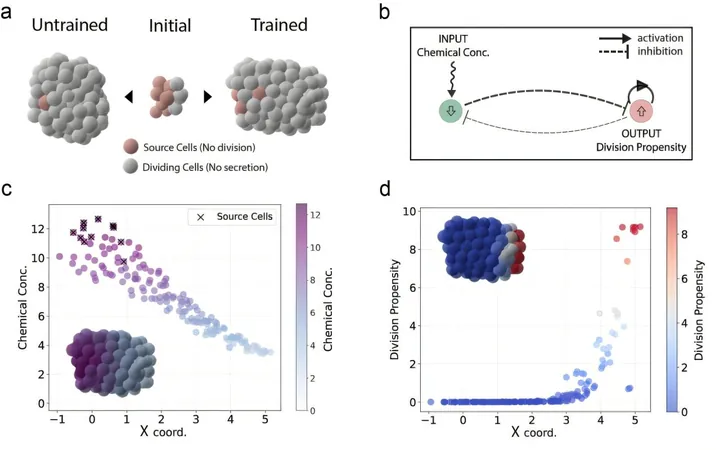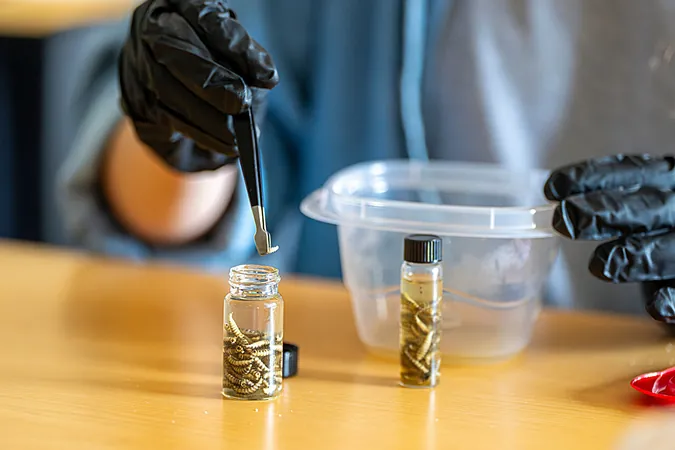
Unlocking the Secrets of Cellular Organization: A Revolutionary Computational Approach
2025-08-21
Author: Sarah
The Magic of Cellular Clusters
In the intricate world of biology, the natural organization of cells into clusters stands as one of the most fascinating processes. These cellular formations eventually morph into essential structures like organs, wings, and limbs, highlighting their critical role in life.
From Discovery to Application: The Challenge Ahead
For years, researchers have delved into this complex phenomenon—not just to mimic the formation of artificial organs but also to unravel the mysteries of cancer growth. However, transforming genetic data into tangible cellular outcomes often requires navigating a labyrinth of trial and error.
Harnessing Machine Learning to Decode Cellular Rules
In an exciting breakthrough published in *Nature Computational Science*, a team of Harvard physicists has launched a pioneering computational framework that seeks to automate this arduous process. Led by graduate student Ramya Deshpande and postdoctoral researcher Francesco Mottes, and under the guidance of Professor Michael Brenner, this innovative research aims to extract the genetic 'rules' that govern how cells interact and function collectively.
Genetic Networking: The Blueprint of Cellular Behavior
By employing advanced machine learning techniques, the framework captures intricate genetic networks that dictate cellular behavior. These networks illuminate the myriad ways cells communicate through chemical signals and the physical forces that bond or separate them.
A Glimpse into Future Applications
Although still in its proof-of-concept stage, this methodology holds immense promise. Merging computational insights with experimental practices could revolutionize our understanding of cellular organization and developmental biology.
The Power of Automatic Differentiation
Central to this discovery is a technique called automatic differentiation, a critical element in training deep learning models in artificial intelligence. This powerful algorithm allows researchers to precisely measure how slight alterations in genetic networks affect the entire cell collection.
A Path Toward Predictive Control in Bioengineering
For several years, Brenner's team has utilized these algorithms across various challenging domains, from engineering self-assembling materials to optimizing fluid dynamics and protein design. Deshpande highlights the potential of this approach for future experiments: "With a predictive model in place, we can ask how to instruct cells to achieve specific goals together."
The Future of Organ Engineering
As Mottes notes, automatic differentiation could be the key to scaling complex biological systems, ultimately paving the way for engineers to manipulate organ growth. This bold vision represents the elusive 'holy grail' of computational bioengineering, promising to transform the landscape of medical science.


 Brasil (PT)
Brasil (PT)
 Canada (EN)
Canada (EN)
 Chile (ES)
Chile (ES)
 Česko (CS)
Česko (CS)
 대한민국 (KO)
대한민국 (KO)
 España (ES)
España (ES)
 France (FR)
France (FR)
 Hong Kong (EN)
Hong Kong (EN)
 Italia (IT)
Italia (IT)
 日本 (JA)
日本 (JA)
 Magyarország (HU)
Magyarország (HU)
 Norge (NO)
Norge (NO)
 Polska (PL)
Polska (PL)
 Schweiz (DE)
Schweiz (DE)
 Singapore (EN)
Singapore (EN)
 Sverige (SV)
Sverige (SV)
 Suomi (FI)
Suomi (FI)
 Türkiye (TR)
Türkiye (TR)
 الإمارات العربية المتحدة (AR)
الإمارات العربية المتحدة (AR)